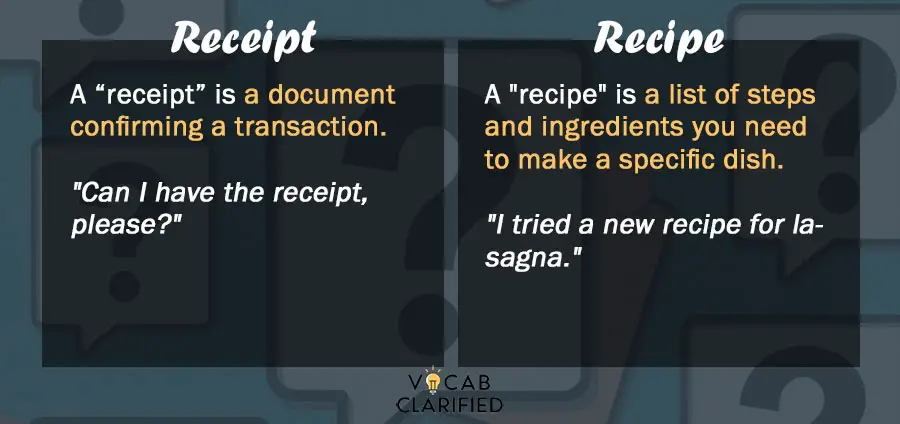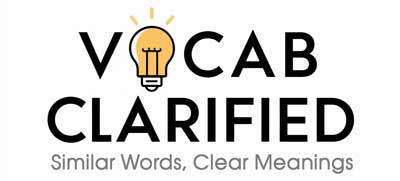Have you ever been chatting with someone who asked for a recipe, and you thought they said ‘receipt’? Or maybe you have flipped through an old cookbook and wondered why it said ‘receipt’ instead of ‘recipe’.
If you have run into these mix-ups before, you are not the only one. This article is here to clear up the confusion between “receipt” and “recipe,” helping you figure out which is which and use them correctly without a second thought.
Understanding Receipt And Recipe

Receipt: Definition and Usage
Traditionally, a “receipt” refers to a written acknowledgment that something of value has been transferred from one party to another.
In terms of documentation, receipts are provided after a transaction to prove the purchase of an item or service.
For example:
- After dining at a restaurant, you receive a receipt detailing your order and the total amount paid.
- When you return a purchase, the store will often request the original receipt as proof of purchase.
Recipe: Definition and Usage
On the other hand, a “recipe” is a list of steps and ingredients you need to make a specific dish.
Over time, “recipe” has become synonymous with culinary creations.
For instance:
- A recipe for chocolate chip cookies will list quantities of flour, sugar, chocolate chips, and other ingredients, along with step-by-step directions for making them.
- Cookbooks are essentially collections of recipes designed to guide even novice cooks through various dishes.
Side-By-Side Comparison
| Aspect | Receipt | Recipe |
| Definition | A document confirming a transaction | A set of instructions for cooking |
| Common Usage | “Can I have the receipt, please?” | “I tried a new recipe for lasagna.” |
| Key Differences | Primarily used in financial transactions | Exclusively used in the context of food preparation |
When deciding between “receipt” and “recipe”, consider the context of your conversation.
If discussing purchases or transactions, “receipt” is the appropriate term. However, when talking about cooking or baking, “recipe” is correct.
Remember, the best choice often depends on understanding the distinct uses of each term.
Everyday Usage Examples
Let’s see some more examples to illustrate how “receipt” and “recipe” fit into everyday language:
- Receipt Example:
- Scenario: You purchase a new jacket, and the cashier hands you a document that itemizes your purchase, which you may need to use later for returns or exchanges.
- Usage: “Please keep your receipt in case you need to return the jacket.”
- Recipe Example:
- Scenario: You are planning a dinner party and want to make a special dish that your grandmother used to prepare.
- Usage: “I need to find my grandmother’s recipe for her famous beef stew.”
FAQ: Receipt vs. Recipe
The shift from “receipt” to “recipe” started around the 1700s. Originally, both terms were used interchangeably in English to mean a set of cooking instructions. However, by the 1800s, “recipe” became the standard term for culinary instructions, while “receipt” evolved to refer primarily to a proof of purchase.
The correct spelling is “receipt.” The word “receit” is a common misspelling and should be avoided in formal writing.
A receipt is often also called a “sales slip,” “proof of purchase,” or “purchase receipt.” These terms are commonly used interchangeably and all refer to the document that confirms a transaction has taken place.
Yes, the “P” in “receipt” is silent. The word is pronounced as “re-seat,” not “re-sept.” The silent “P” can make spelling the word tricky, so it’s good to remember this quirk in English pronunciation.
Conclusion
Now that you’ve seen “receipt” and “recipe” in action, the confusion should be dissipating. Understanding the correct contexts and applications of these terms not only enhances your vocabulary but also helps prevent potentially embarrassing mix-ups.
Use this guide as a reference, and soon, choosing between “receipt” and “recipe” will become second nature. Dive into your files for receipts and your cookbooks for recipes, and enjoy the clarity that comes with knowledge!

